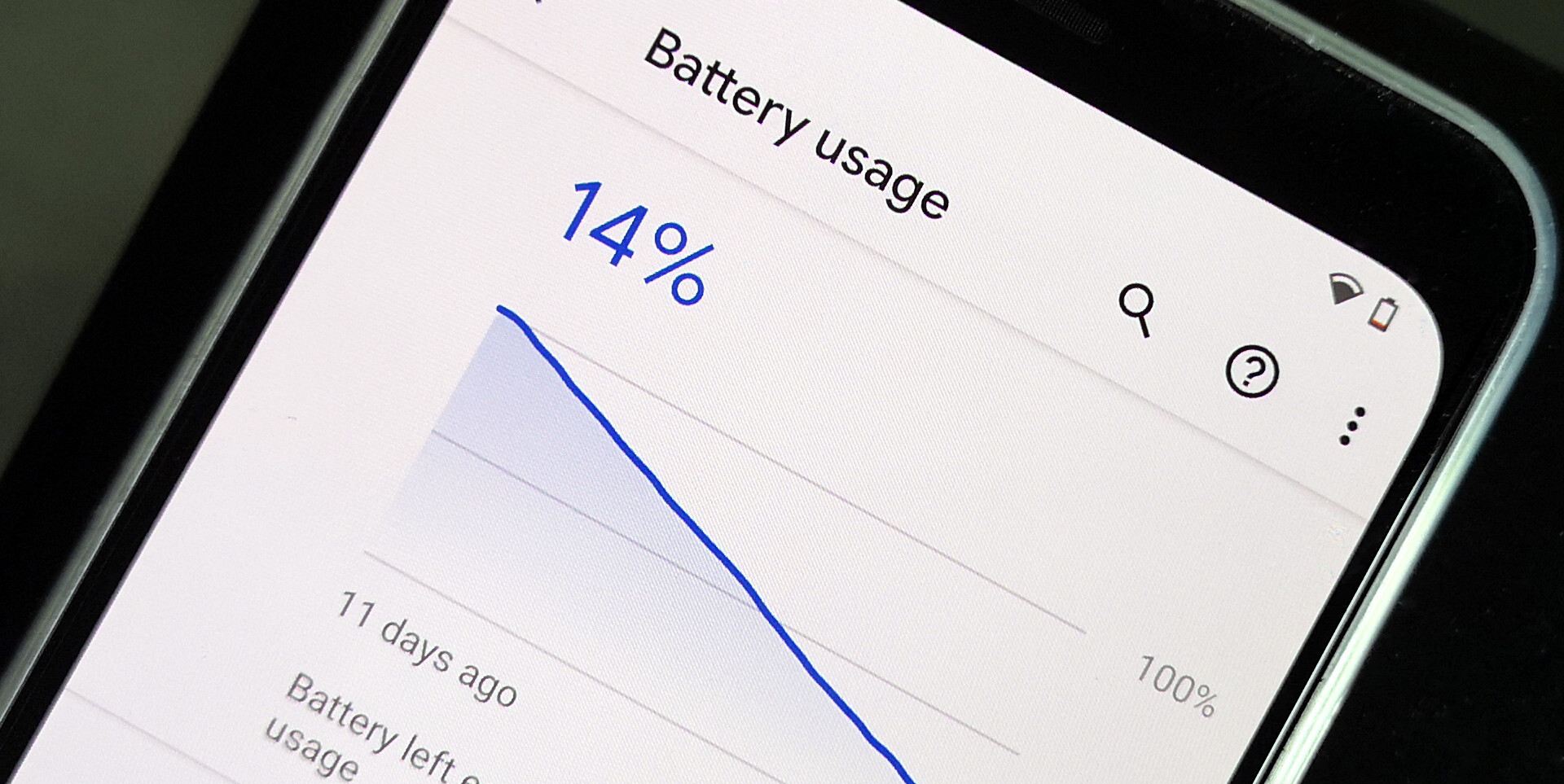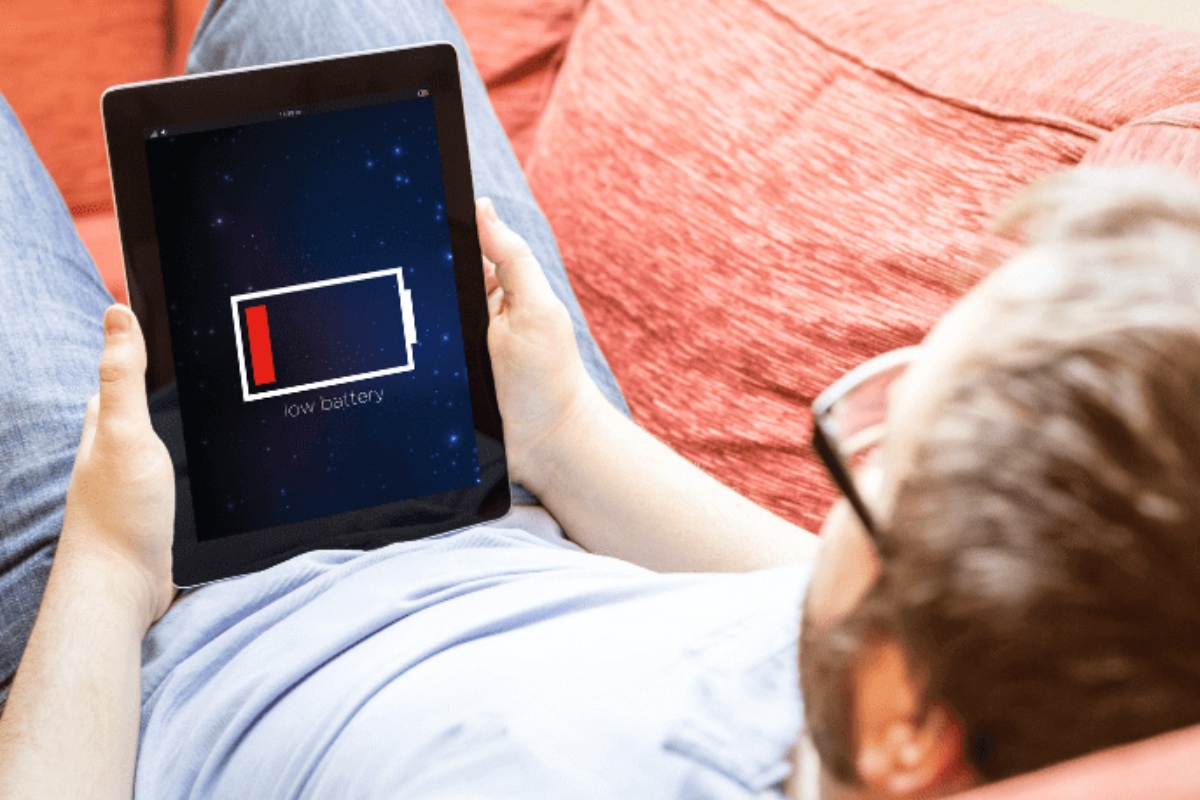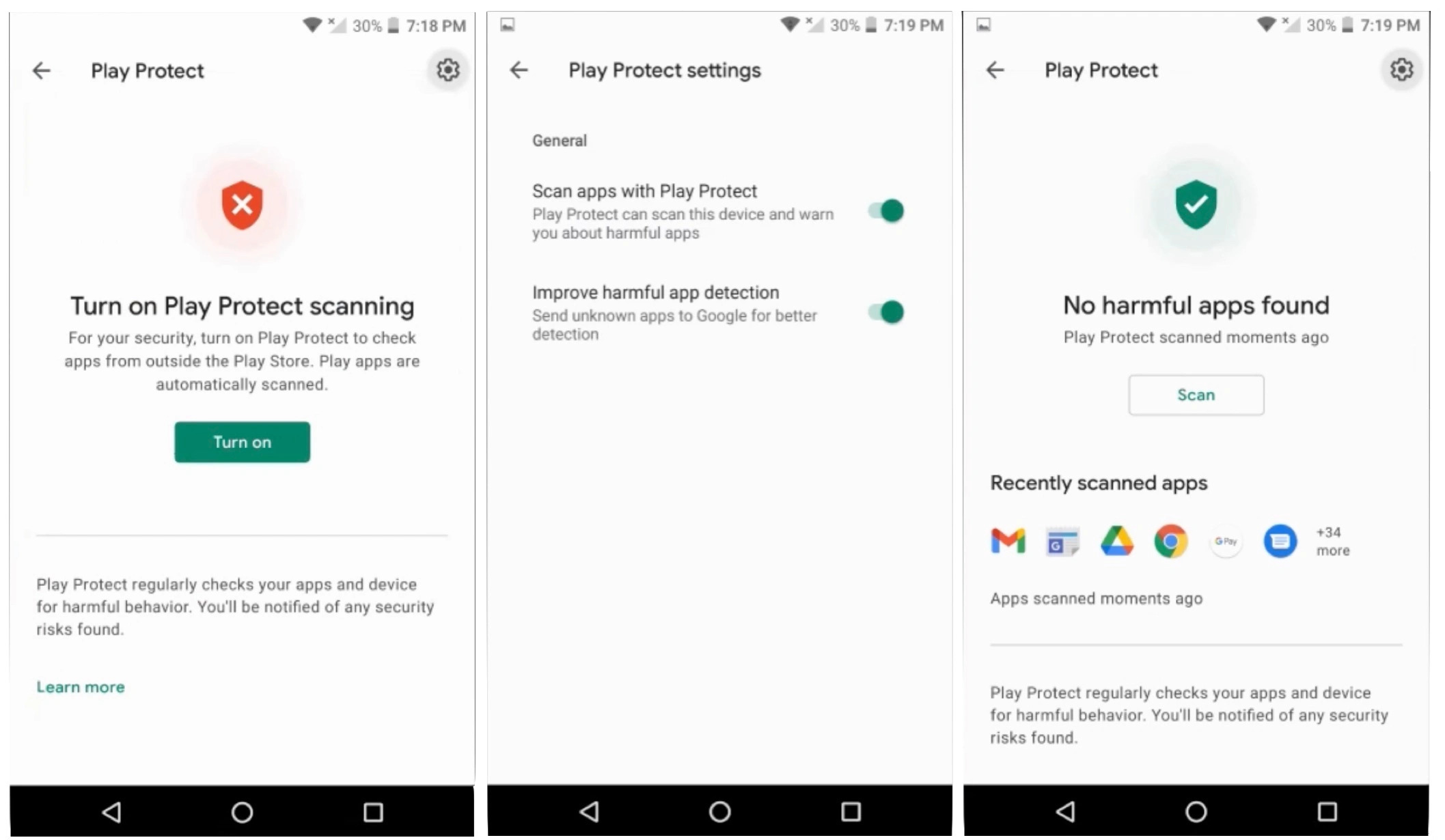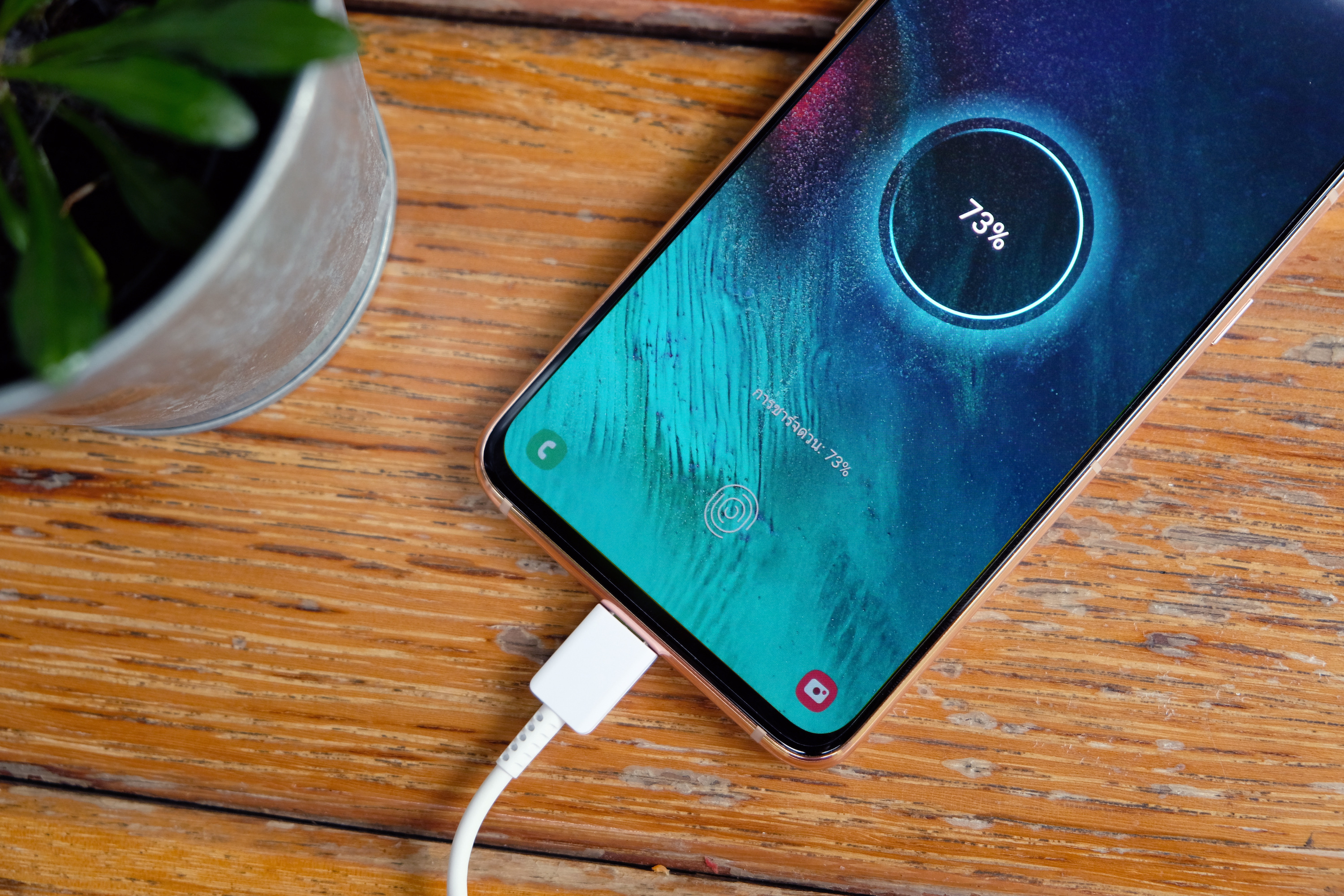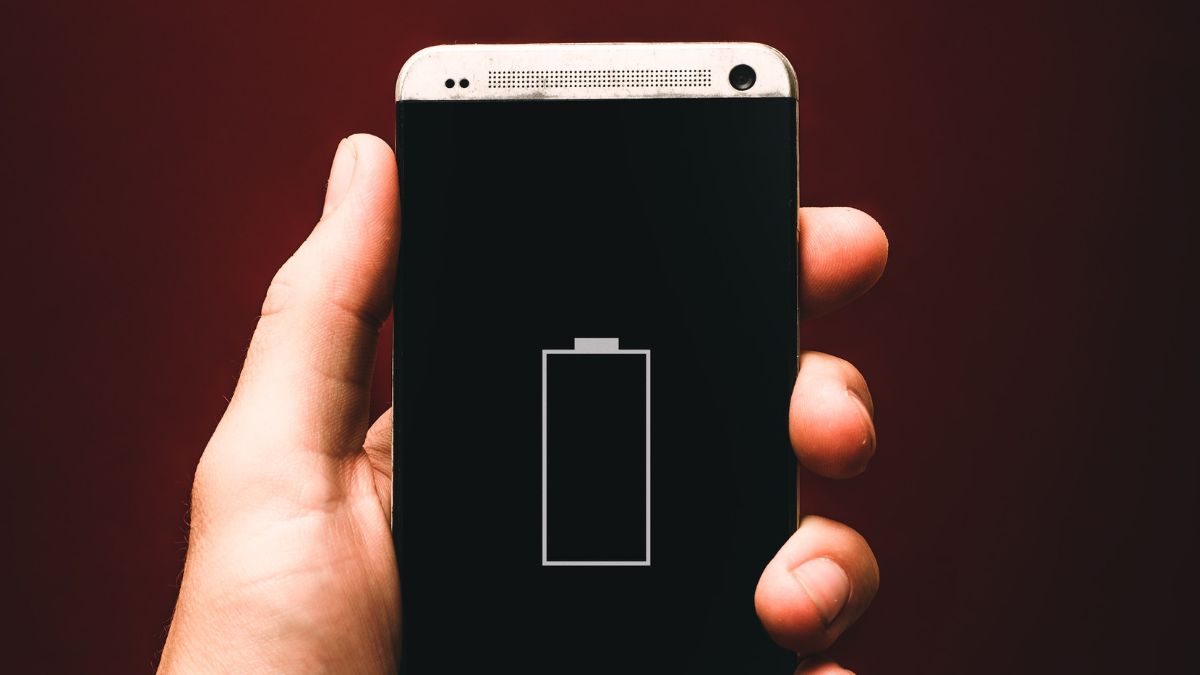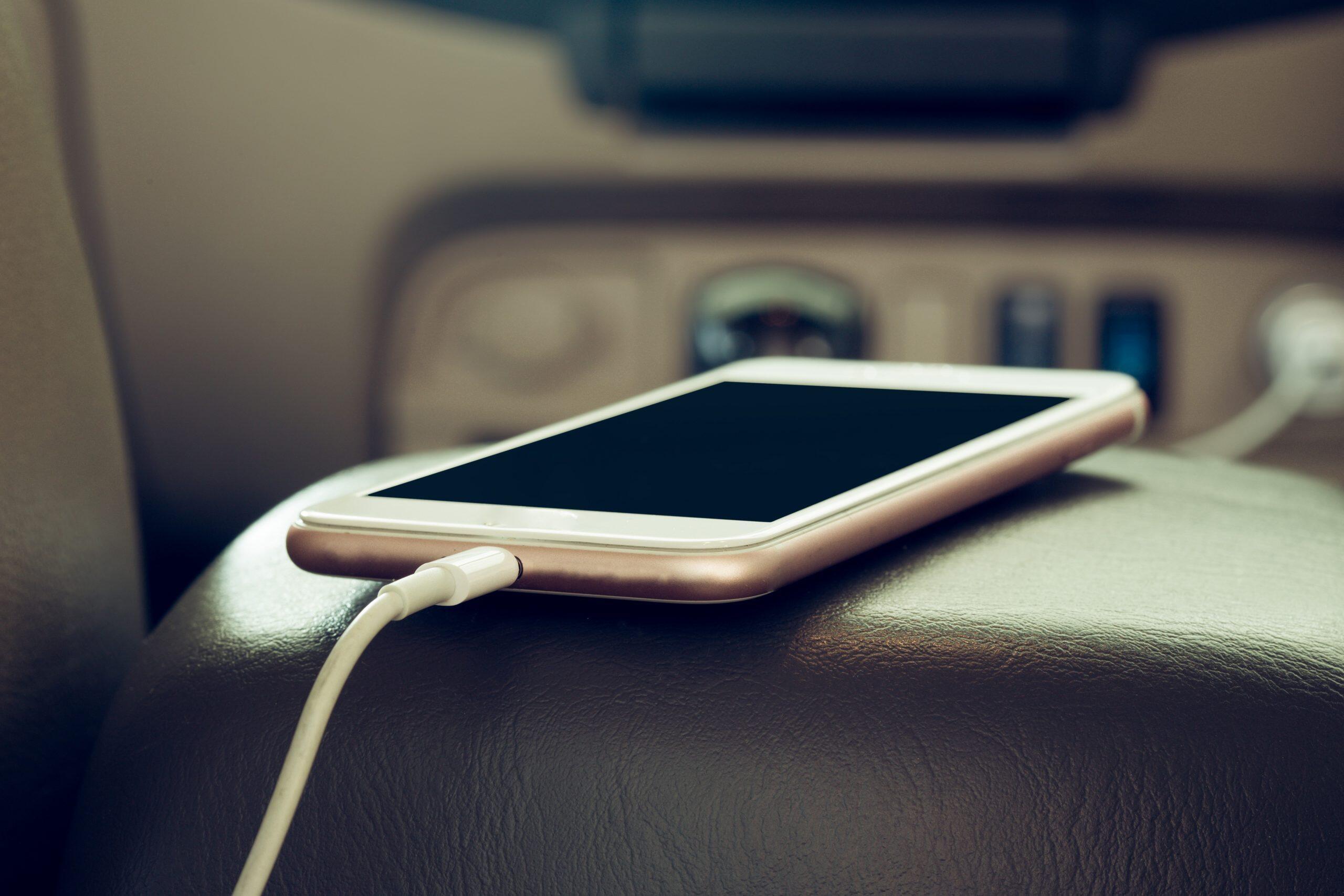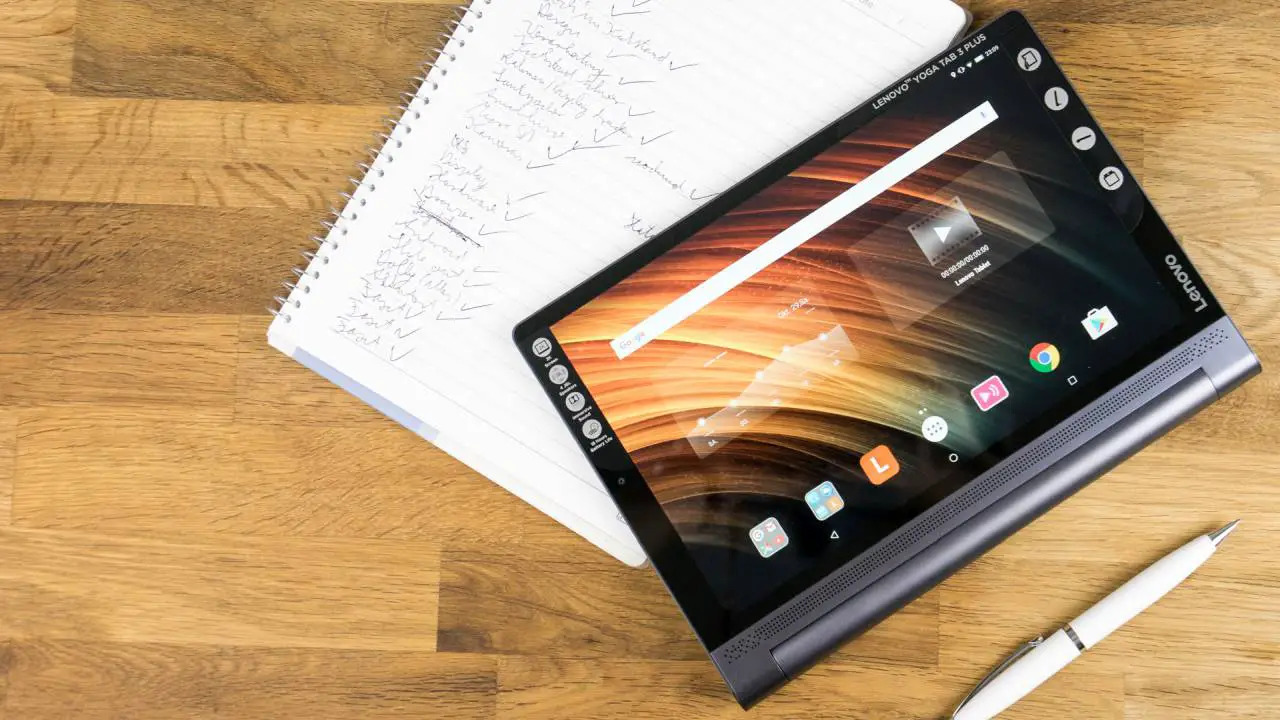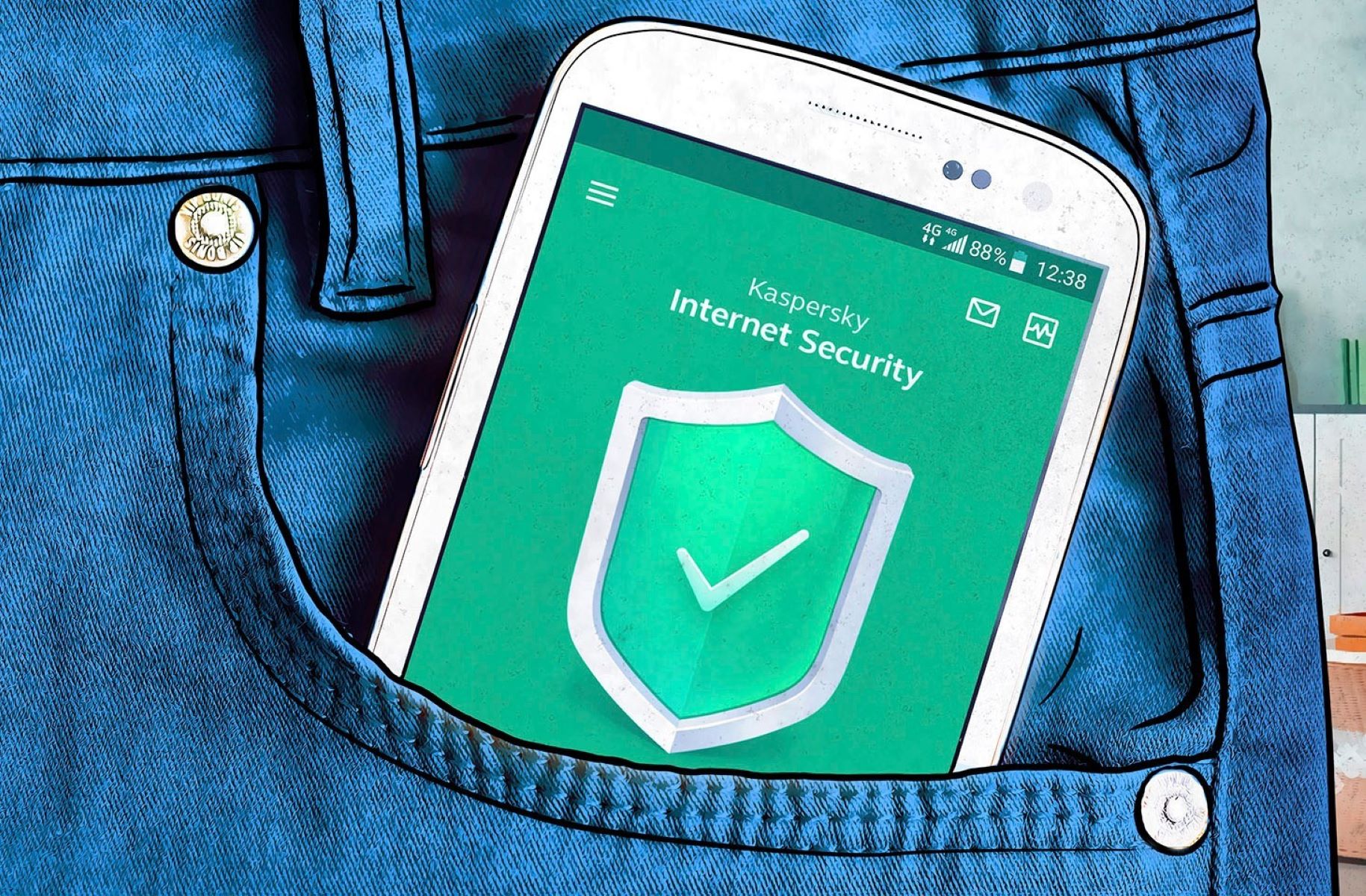Introduction
Are you tired of constantly running out of battery power on your Android device? If so, you’re not alone. Battery drain is one of the most common issues faced by Android users. Whether you’re using your device for work, entertainment, or staying connected with friends and family, a drained battery can be a major inconvenience.
But what exactly is causing your Android battery to drain so quickly? In this article, we’ll explore some of the most common culprits behind battery drain and discuss ways to optimize battery life.
Android devices provide us with a plethora of features and functionalities, but these can also contribute to battery drain. From excessive app usage and high screen brightness to background processes and connectivity options, there are several factors that can lead to a drained battery. By understanding and managing these factors, you can significantly improve your device’s battery life and reduce the frustration of constantly needing to charge.
In the following sections, we’ll delve into various aspects that may be draining your Android battery and provide practical tips to help you conserve power and extend battery life. So, let’s get started and discover why your Android battery is running out so quickly.
App Usage
One of the primary factors that contribute to battery drain on your Android device is excessive app usage. Many apps continue running in the background even when you’re not actively using them, consuming valuable battery power.
To address this issue, it’s important to identify and manage the apps that are draining your battery the most. Start by checking the battery usage stats on your Android device. Go to “Settings” > “Battery” to view the apps that are consuming the most power.
If you notice any apps that are draining a significant amount of battery, consider reducing your usage or finding alternatives. Additionally, some apps offer battery optimization settings that can help minimize their impact on your device’s battery life.
Another effective strategy is to close unused apps running in the background. Whenever you’re done using an app, make sure to fully exit it by pressing the back or home button instead of simply minimizing it. This prevents apps from continuing to use system resources and draining your battery.
Furthermore, you can also enable the “Battery Saver” mode on your Android device. This mode restricts background app activity, limits CPU usage, and reduces screen brightness to conserve power. You can enable this feature by going to “Settings” > “Battery” and toggling the “Battery Saver” option.
By keeping a close eye on your app usage and taking proactive steps to minimize unnecessary battery drain, you can significantly extend the battery life of your Android device.
Connectivity
While staying connected is essential for most Android users, certain connectivity options can contribute to significant battery drain. Here are a few aspects to consider:
1. Wi-Fi: When Wi-Fi is enabled, your Android device constantly scans for and connects to available networks. This continuous scanning and connection process can consume a significant amount of battery power. To reduce Wi-Fi battery drain, consider disabling Wi-Fi when you’re not actively using it or when you’re in an area with weak or no Wi-Fi signals. You can easily toggle Wi-Fi on or off in the quick settings menu or by going to “Settings” > “Wireless & networks” > “Wi-Fi”.
2. Bluetooth: Similar to Wi-Fi, Bluetooth consumes battery power while actively searching for and connecting to devices. If you’re not using Bluetooth accessories or transferring files, it’s a good idea to turn off Bluetooth. You can disable Bluetooth by going to “Settings” > “Connected devices” > “Bluetooth”.
3. Mobile Data: When your device is constantly connected to cellular data, it can quickly drain the battery. Avoid unnecessary battery drain by disabling mobile data when you’re connected to a Wi-Fi network or in an area with poor data coverage. You can turn off mobile data in the quick settings menu or by going to “Settings” > “Wireless & networks” > “Mobile network”.
4. Location Services: Android devices use GPS and other location services to provide location-based features in apps. However, these features consume significant amounts of battery power. Consider disabling location services when they are not required or restrict them to specific apps. You can manage location services in the “Location” section of your device’s settings.
By managing your connectivity options and disabling them when not needed, you can significantly reduce the battery drain caused by these features and extend the overall battery life of your Android device.
Screen Brightness
The screen brightness of your Android device plays a significant role in battery drain. The higher the brightness level, the more power it consumes. It’s crucial to find the right balance between screen visibility and battery conservation.
To optimize screen brightness, consider the following tips:
1. Adaptive Brightness: Utilize the adaptive brightness feature available on most Android devices. This feature automatically adjusts the screen brightness based on ambient lighting conditions. To enable adaptive brightness, go to “Settings” > “Display” > “Adaptive Brightness” and toggle the switch.
2. Manual Brightness: Alternatively, you can manually adjust the screen brightness to a lower level. Set the brightness to the lowest level that is comfortable for you to view the screen. You can adjust the brightness by swiping down from the top of your screen to access the quick settings panel and using the brightness slider.
3. Screen Timeout: Set a shorter screen timeout duration. When your device screen stays lit for a longer time, it consumes more battery power. Adjust the screen timeout in the display settings to automatically turn off the screen after a shorter period of inactivity.
4. Dark Themes: Consider using dark themes or wallpapers on your device. Dark-themed interfaces use fewer pixels, which can reduce battery drain compared to bright and colorful interfaces.
Taking these steps to manage screen brightness can help conserve battery power and extend the overall battery life of your Android device. By finding the right balance between screen visibility and power consumption, you can enjoy your device for longer periods without needing to charge it frequently.
Background Processes
Background processes running on your Android device can have a significant impact on battery drain. These processes include apps running in the background, system services, and notifications. Here’s how you can manage them:
1. Manage App Permissions: Some apps may be unnecessarily running in the background and consuming battery power due to unnecessary permissions. Review the permissions granted to each app and disable permissions that are not essential.
2. Close Unused Apps: Make it a habit to close unused apps running in the background. Press the Recent Apps button and swipe away apps that you no longer need. This ensures that background processes associated with these apps are stopped, reducing battery usage.
3. Limit Background Data: Some apps continue to consume data in the background, which can lead to battery drain. To manage this, go to “Settings” > “Apps & notifications” > “App info” and select the app. Then, disable the “Background data” option for that particular app. This prevents the app from using data when it’s not actively being used.
4. Manage Notifications: Notifications from various apps can cause your device to wake up and consume battery power. Disable unnecessary notifications for apps that you don’t need immediate updates from. Go to “Settings” > “Apps & notifications” > “Notifications” and customize the notification settings for each app.
5. Optimize System Services: Android devices run various system services in the background, such as location services and synchronization. Tweak these services to minimize battery drain. Go to “Settings” > “System” > “Advanced” > “Developer options” > “Running services” to see the services currently running on your device and identify any potential battery drainers.
By managing background processes effectively, you can reduce unnecessary battery drain caused by apps, services, and notifications running in the background. This allows you to conserve battery power and prolong the lifespan of your Android device.
Location Services
Location services are a valuable feature on Android devices, enabling various location-based applications and services. However, these services can consume a significant amount of battery power. Here’s how you can optimize location services to minimize battery drain:
1. Use Battery-Saving Mode: Many Android devices offer a battery-saving mode specifically designed to reduce power consumption by location services. Enable this mode in the device settings to limit the frequency of location updates and conserve battery power.
2. Restrict Location Access: Review the location access permissions for apps on your device. Some apps may unnecessarily request constant access to your location, even when they don’t require it. Go to “Settings” > “Apps & notifications” > “App info” and select the app to modify its location permissions.
3. Enable High Accuracy Mode Selectively: High accuracy mode (using GPS, Wi-Fi, and mobile network) provides the most precise location information but consumes more battery. Enable this mode only when necessary, such as when using navigation apps or when participating in location-based activities. You can switch between location modes in the device settings under “Location” or in the quick settings panel.
4. Use Location-Based Profiles: Some Android devices offer location-based profiles to automatically adjust various settings depending on your location. For example, you can set your device to switch to silent mode when you are at work. Utilizing these profiles can help optimize battery usage by adjusting settings based on your specific location.
5. Turn Off Location History: Location history is a feature that keeps track of your device’s location over time. While this can be helpful in certain situations, it also consumes battery power. Disable location history by going to “Settings” > “Location” > “Google Location History” and toggling it off.
By implementing these strategies, you can strike a balance between utilizing location services and conserving battery power on your Android device. This allows you to enjoy location-based features while optimizing battery life.
Battery-draining Apps
Some apps are notorious for draining the battery on Android devices. These apps may be poorly optimized, constantly running in the background, or using excessive system resources. Here are some tips for identifying and managing battery-draining apps:
1. Check Battery Usage: Start by checking the battery usage stats on your Android device. Go to “Settings” > “Battery” to view the apps that are consuming the most power. If you notice any apps draining a significant amount of battery, consider reducing your usage or finding alternatives.
2. Update Apps: Developers often release updates that include bug fixes and performance improvements. Make sure all your apps are up to date to take advantage of these optimizations and potential battery-saving features. You can update apps through the Google Play Store.
3. Disable or Uninstall Problematic Apps: If you identify specific apps as major culprits for battery drain, you may choose to disable or uninstall them altogether. Keep in mind that disabling or uninstalling certain system apps may require root access or have unintended consequences, so exercise caution when doing so.
4. Optimize App Settings: Many apps offer settings that can help reduce their impact on battery life. Explore the settings of individual apps to find options such as background app refresh, push notifications, or data syncing intervals. Adjust these settings based on your preferences and prioritize battery life.
5. Use Lite Versions or Alternatives: In some cases, there may be lite versions or alternative apps available that offer similar functionality with less impact on battery life. Consider switching to these alternatives if they better suit your needs without draining your device’s battery.
Taking these steps to identify and manage battery-draining apps can significantly improve the overall battery life of your Android device. Regularly reviewing app usage and optimizing settings can help ensure that your favorite apps don’t come at the expense of a drained battery.
Push Notifications
Push notifications are a convenient feature that keeps us informed about important updates from various apps. However, the constant stream of notifications can contribute to battery drain on your Android device. Here are some tips to manage push notifications and preserve battery life:
1. Prioritize Notifications: Review the notifications you receive and prioritize them based on importance. Disable notifications from apps that are not critical or that you seldom use. Go to “Settings” > “Apps & notifications” > “Notifications” to customize notification settings for individual apps.
2. Group Notifications: Some Android devices allow you to group notifications from the same app. Enabling this feature can reduce the number of individual notifications that wake up your device, thereby saving battery power. Configure this option in the notification settings or through the quick settings panel.
3. Use Battery Optimization: Android devices offer a battery optimization feature that restricts background activity for certain apps. Enable battery optimization for apps that you don’t need to receive real-time notifications from. Access this feature in “Settings” > “Battery” or “Settings” > “Apps & notifications” > “Special app access” > “Battery optimization”.
4. Disable App Notification Badges: App notification badges, or the small numbers that appear on app icons indicating unread messages or updates, can be visually distracting and consume battery power. Disable these badges for apps that aren’t a priority by going to “Settings” > “Apps & notifications” > “Notifications”.
5. Schedule Quiet Hours: Establish a schedule for quiet hours when notifications are silenced or limited. This allows you to have uninterrupted time without constant distractions and conserves battery power. You can set up quiet hours in the “Do Not Disturb” settings of your device.
By selectively managing push notifications, you can reduce the number of wake-ups and screen activations, leading to improved battery life on your Android device. Finding the right balance between staying informed and preserving battery power is key to enhancing your overall user experience.
Auto-syncing
Auto-syncing is a feature on Android devices that automatically synchronizes data between your device and online accounts. While convenient, it can also contribute to battery drain. Here are some tips to manage auto-syncing and optimize battery life:
1. Disable Unnecessary Auto-sync: Review the accounts on your device and disable auto-sync for those that don’t require constant synchronization. Go to “Settings” > “Accounts” to access account settings and disable auto-sync for individual accounts.
2. Adjust Sync Frequency: For accounts that you want to keep auto-sync enabled, consider adjusting the sync frequency. Set longer intervals between syncing to reduce the frequency of data transfer and minimize battery drain. You can customize sync frequency in the account settings.
3. Selective Sync: Some apps and accounts allow you to choose which specific data should be synchronized. By selecting only the necessary data to sync, you can reduce the amount of data transferred and conserve battery power. Look for selective sync options in the app or account settings.
4. Manual Sync: Instead of relying on auto-sync, you can manually sync your accounts when needed. This gives you more control over when and how much data is synchronized, limiting battery usage. Most apps and accounts have a manual sync option within their settings.
5. Background Data Restriction: In addition to adjusting auto-sync settings, you can further conserve battery power by restricting background data for specific apps. This prevents them from using data or syncing in the background when you’re not actively using them. Go to “Settings” > “Apps & notifications” > “App info” and select the app to modify background data restrictions.
By managing auto-syncing and customizing sync settings on your Android device, you can reduce unnecessary data transfers and conserve battery power. Finding the right balance between real-time data synchronization and battery optimization can lead to improved battery life and a more efficient user experience.
Widgets and Live Wallpapers
Widgets and live wallpapers are popular customization features on Android devices that offer enhanced usability and visual appeal. However, they can also contribute to battery drain. Here’s how you can manage widgets and live wallpapers to optimize battery life:
1. Limit Widget Usage: Widgets are constantly running in the background, updating information and consuming battery power. Limit the number of widgets on your home screen to only those that you frequently use or find essential. Remove unnecessary widgets by pressing and holding on them and dragging them to the “Remove” or “Trash” icon that appears.
2. Opt for Battery-friendly Widgets: Some Android devices offer battery-friendly widgets that are designed to consume less power. Explore these options and consider using them instead of resource-intensive widgets. Look for widgets with power-saving or efficiency features in the widget menu.
3. Choose Static Wallpapers: Live wallpapers, although visually appealing, are active background graphics that continuously update and animate. This constant activity consumes battery power. Opt for static wallpapers instead, which use less power and have minimal impact on battery life. You can change your wallpaper by pressing and holding on the home screen, selecting “Wallpapers” or “Wallpaper settings”, and choosing a static wallpaper.
4. Use System-provided Widgets and Wallpapers: System-provided widgets and wallpapers are optimized for your specific device and tend to be more power-efficient compared to third-party options. Consider using the widgets and wallpapers that come pre-installed on your Android device to minimize battery drain.
5. Adjust Update Intervals: For widgets that allow customization, such as weather or news widgets, adjust the update intervals to reduce the frequency of data retrieval. This will help conserve battery power while still providing you with the necessary information. Locate the settings for each widget to modify the update frequency or interval.
By selectively using widgets and opting for static wallpapers, you can reduce the battery drain caused by these customization features on your Android device. Finding a balance between personalizing your device and optimizing battery life will enhance your overall user experience.
Battery Saving Mode
Battery saving mode is a built-in feature available on most Android devices that helps optimize battery life by reducing power consumption. Activating battery saving mode can significantly improve the longevity of your device’s battery when you need it most. Here’s how to make the most of this feature:
1. Enable Battery Saving Mode: To enable battery saving mode, go to the device settings and locate the “Battery” or “Power” section. From there, you can toggle on the battery saving mode option. Some Android devices also have an option to automatically activate battery saving mode when the battery level reaches a certain percentage.
2. Restrict Background Activity: Battery saving mode limits unnecessary background processes and activities, such as app background refresh and data synchronization. This helps conserve battery power by reducing the overall load on the device’s resources. However, keep in mind that some features may be temporarily disabled or restricted while in battery saving mode.
3. Lower Screen Brightness: Battery saving mode often adjusts the screen brightness to a lower level, which can significantly reduce power consumption since the screen is one of the biggest battery drainers. If the screen brightness level set by battery saving mode is too dim for your liking, you can manually adjust it to a comfortable level in the device settings.
4. Minimize Performance: Battery saving mode may also limit CPU performance to conserve battery power. This can result in slightly slower performance, but it significantly prolongs battery life. If you notice any performance lag, it’s a temporary trade-off for extended battery usage.
5. Customize Battery Saving Options: Some Android devices allow you to customize battery saving options according to your preferences. This includes choosing which features to disable or restrict, such as vibration, location services, or background data. Depending on your usage and needs, you can tailor battery saving mode settings to strike the right balance between battery preservation and functionality.
By enabling and optimizing battery saving mode on your Android device, you can extend the battery life when you need it the most. Whether you’re traveling, away from a power source, or simply trying to get through a busy day, battery saving mode helps ensure that your device lasts longer on a single charge.
Unused Apps and Services
Unused apps and services running in the background can contribute to unnecessary battery drain on your Android device. By identifying and managing these unused apps and services, you can optimize battery life. Here’s how:
1. Uninstall or Disable Unused Apps: Take the time to review the apps installed on your device and identify those that you no longer use or need. Uninstalling or disabling these apps can free up valuable storage space and prevent them from running in the background and draining your battery. Go to “Settings” > “Apps & notifications” > “App info” to uninstall or disable apps.
2. Clear App Cache: Cached data can accumulate over time and take up storage space, as well as contribute to background activity. Clearing the cache of unused apps can help reduce their impact on battery life. Go to “Settings” > “Storage” > “Cached data” to clear the cache for individual apps.
3. Disable Bloatware: Many Android devices come with pre-installed apps that you may not use or need. These apps often run in the background and consume system resources. Depending on your device, you may be able to disable or uninstall bloatware apps. Go to “Settings” > “Apps & notifications” > “App info” and disable or uninstall the bloatware apps.
4. Turn Off Unused System Services: Android devices offer a range of system services that may be unnecessary for your usage patterns. Go to “Settings” > “System” > “Advanced” > “Developer options” > “Running services” to identify and disable any unnecessary system services running in the background.
5. Use a Task Manager or Cleaner App: Consider using a reliable task manager or cleaner app from the Google Play Store. These apps can help identify and terminate background processes, clear cached data, and manage unused apps more efficiently. However, choose reputable apps and be cautious of apps that claim to boost performance but may have questionable effectiveness.
By regularly reviewing and managing unused apps and services, you can significantly reduce unnecessary battery drain on your Android device. Not only will this help extend battery life, but it will also free up system resources and improve overall device performance.
System Updates
Keeping your Android device updated with the latest system updates is crucial for optimal performance and battery life. System updates often include bug fixes, security patches, and performance enhancements that can improve battery efficiency. Here’s why system updates matter:
1. Bug Fixes and Performance Improvements: System updates address known issues and bugs in the operating system, which can contribute to battery drain. By regularly updating your device, you ensure that these bugs are fixed, resulting in improved overall performance and battery efficiency.
2. Security Enhancements: System updates also include important security patches that protect your device from vulnerabilities. Staying on the latest software version ensures that your device has the latest security measures in place, which can prevent malicious software or activities that can drain your battery.
3. Battery Optimization: Manufacturers often introduce battery optimization features and improvements through system updates. These updates may include power-saving algorithms, background process management, and other optimizations that can extend battery life without sacrificing performance.
4. App Compatibility: App developers frequently release updates that are optimized for the latest Android system versions. By keeping your device updated, you ensure that your apps run smoothly and efficiently, reducing the risk of app-related battery drain issues.
5. New Features: System updates may introduce new features or settings that can further enhance battery life. For example, manufacturers may introduce power-saving modes or settings customization options that allow you to fine-tune your device’s battery usage to your specific needs.
To check for system updates, go to “Settings” > “Software Update” or “About phone” > “Software updates” on your device. If an update is available, follow the on-screen instructions to download and install it. Remember to connect your device to a stable Wi-Fi network for faster and smoother updates.
By regularly updating your Android device, you ensure that it runs efficiently, stays secure, and benefits from the latest battery optimization features. Taking the time to update your device can significantly improve battery life and enhance your user experience.
Battery Health
Battery health is an essential aspect to consider when aiming for long-lasting battery life on your Android device. Over time, the battery capacity may decline, affecting its overall performance and runtime. Here are some tips to maintain and optimize battery health:
1. Avoid Extreme Temperatures: Exposing your device to extremely high or low temperatures can degrade the battery health. Avoid leaving your device in direct sunlight, hot cars, or freezing temperatures for prolonged periods. Optimal operating temperature ranges are typically specified by the device manufacturer.
2. Use Original Chargers and Cables: Using authorized or original chargers and cables ensures compatibility and helps maintain proper charging levels. Cheap or uncertified chargers can potentially damage the battery or provide inadequate charging, leading to battery health deterioration over time.
3. Avoid Overcharging or Deep Discharging: Overcharging your device or allowing it to completely discharge can strain the battery and impact its lifespan. Ideally, aim to keep your device’s battery level between 20% and 80% for optimal battery health.
4. Calibrate the Battery: Occasionally calibrating your device’s battery can help ensure accurate battery level readings and optimize battery performance. To calibrate the battery, fully charge it and then let it drain completely until the device powers off. Finally, recharge it to full capacity without interruption.
5. Enable Battery Optimization Options: Android devices offer various battery optimization options, such as adaptive battery and battery optimization settings for individual apps. Enable these options to optimize battery usage and prolong battery life by limiting background activity and optimizing power consumption.
6. Periodically Restart or Power Cycle: Restarting or power cycling your device periodically can help refresh system processes and optimize battery usage. Simply turn off your device and then turn it back on to give the system a fresh start and potentially enhance battery performance.
It’s important to note that while these tips can help maintain battery health, it is natural for battery capacity to degrade over time. If you notice a significant decrease in battery performance, it might be time to consider replacing the battery or seeking professional help.
By taking care of your device’s battery health and following these guidelines, you can prolong its lifespan and maintain optimal battery performance. This ensures that your Android device continues to perform reliably and efficiently throughout its usage lifecycle.
Conclusion
Managing battery drain on your Android device is essential for prolonged usage and a seamless user experience. By understanding the various factors that contribute to battery drain and implementing effective strategies, you can optimize battery life and minimize the inconvenience of constantly needing to recharge.
In this article, we explored several common culprits of battery drain, such as excessive app usage, connectivity options, screen brightness, background processes, and more. By controlling app usage, adjusting settings, and optimizing various features, you can significantly extend the battery life of your Android device.
It’s important to prioritize battery conservation without compromising functionality. Finding the right balance between turning off unnecessary features, managing settings, and customizing your device to suit your needs is crucial. Regularly reviewing and optimizing these aspects will ensure that your Android device operates efficiently and conserves battery power.
Remember to keep your device updated with the latest system updates, as these often include battery optimization improvements, bug fixes, and enhanced security features. Additionally, taking care of your battery health and adhering to best practices, such as avoiding extreme temperatures and using original chargers, can help maintain battery capacity over time.
By following the tips and strategies outlined in this article, you can enjoy longer battery life on your Android device, allowing for uninterrupted productivity, entertainment, and communication throughout your day.
So, take control of your Android device’s battery life, implement these suggestions, and enjoy the convenience of a longer-lasting battery for all your daily needs!







